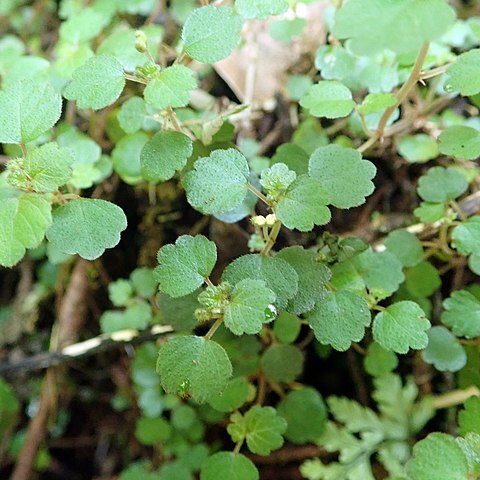Monoecious diffuse perennial herbs, often strigose. Leaves alternate, the upper ones opposite, membranous, 3-veined from near base, petiolate; stipules small, free, caducous. Inflorescence unisexual, axillary, few-flowered, without involucre of bracts. Male inflorescences usually 2–4-flowered, pedunculate; flowers sessile at peduncle apex; perianth bilabiate, the larger lobe incurved. Female inflorescences 1–20-flowered, sessile, usually below the male; flowers subsessile; perianth attenuate, 2-or 3-dentate; stigma filiform. Achene ellipsoidal, compressed, enclosed by perianth.
Fls small, in unisexual or androgynous axillary clusters. ♂ 1-5, clustered on a common peduncle; per. bilabiate, outer lip inflexed in bud, stamen 1. ♀ solitary to few together, sessile; per. ovoid; ovary free, stigma linear, pubescent, ovule erect. Achene invested by persistent per. Creeping to diffuse annual to perennial herbs with alt. lvs; stipules lateral. Genus of a few spp. of Abyssinia, South Africa, Australia and N.Z. The N.Z. sp. occurs in Australia and Tasmania, but the different forms need critical examination.

